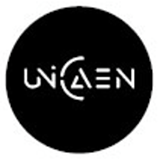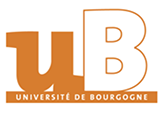Detailed introduction of Caen Normandy University:
Introduction
The University of Caen Normandy is a public comprehensive university located in Caen, the capital of the Lower Normandy region of France. Its history can be traced back to 1432 and it is one of the important universities in France.
Overview
Student size: In 2020-2021, the school has a total of 33,349 students, including 810 doctoral students and 210 international students.
Faculty: In 2020-2021, the school has 1,575 academic staff and a total of 2,684 faculty members.
History
The University of Caen was founded by King Henry VI of England in 1432. It was originally composed of two colleges, canon law and common law. By 1438, it had five colleges. In 1452, its establishment was confirmed by King Charles VII of France. In 1944, the school was completely destroyed in the Battle of Normandy. From 1948 to 1957, the school was completely destroyed. During the period of 1950, under the chairmanship of President Pierre Doré, the university was rebuilt in the style of modern British and American campuses. The inauguration ceremony of the new campus was held on June 1 and 2, 1957. Since then, the Phoenix of Nirvana has become the symbol of the University of Caen.
Foundation time
1432.
School strength
Teaching quality: As one of the public universities in France, the teaching follows the European Bologna process and adopts the European credit transfer system. The degrees awarded are widely recognized in Europe and internationally. The school offers a wide variety of courses, covering undergraduate, master, doctoral and other levels, focusing on the combination of theory and practice to cultivate students' comprehensive literacy and professional ability.
Scientific research level: The school cooperates with many well-known scientific research institutions, such as the French National Center for Scientific Research (CNRS) and the French National Institute of Health and Medical Research (INSERM), to jointly carry out cutting-edge scientific research. The school has many research centers and laboratories, such as the ERIBIA laboratory, which has been dedicated to the study of English literature and Ireland since the 1970s, and the national large-scale heavy ion accelerator GANIL, which was jointly built with the French National Academy of Sciences CNRS and the Atomic Energy Center CEA in 1983. These scientific research facilities provide strong support for the school's scientific research work and promote the school's scientific research innovation and development in multiple disciplines.
Institutional nature
Public university.
Educational philosophy
The University of Caen Normandy is committed to cultivating talents with innovative spirit, practical ability and social responsibility, focusing on the personalized development of students, encouraging students to actively participate in scientific research projects and social practice activities, improving students' comprehensive quality and employment competitiveness, and laying a solid foundation for students' future career development and personal growth.
Key laboratories and disciplines
Key laboratories:
GANIL - National Large Heavy Ion Accelerator Laboratory: It is one of the largest laboratories in the same field in the world, providing an important experimental platform for research in nuclear physics, astrophysics, new materials research and development and other fields.
ERIBIA Laboratory: Focuses on English literature and Irish studies and has an important influence in the humanities and social sciences.
CYCERON - Biomedical imaging platform: provides advanced imaging technology support for biomedical research, which helps promote the development of medical diagnosis and treatment technology.
Key disciplines:
Economics and management: Economics ranks among the best in France, covering multiple professional directions such as economic management, banking, finance and insurance, industrial economics, and econometrics. It has trained many professionals in the economic field and made important contributions to the economic development of the region and the country.
Science and engineering: It is well-known throughout Europe for biochemistry and mechanical engineering, and also has strong strengths in computer science, electronic engineering, chemical engineering, bioengineering and other disciplines. The school's science and engineering majors are closely related to the local The school has closely integrated with the industry, provided a large number of technical talents for related enterprises, and promoted the scientific and technological progress and industrial development of the region.
Humanities and Social Sciences: It has a profound academic accumulation in history, geography, philosophy, sociology, psychology, education and other disciplines, and has cultivated many outstanding humanities and social science talents, which has played a positive role in promoting France's cultural heritage and social development.
Medicine: The school's medical-related majors have achieved remarkable research results in the fields of medical technology, clinical medicine, etc., and have cultivated a large number of professional talents for the medical and health industry. At the same time, it has also made important contributions to the development of local medical and health care.
Department
The school has 11 departments, 6 colleges, 1 engineering college, 2 higher vocational colleges.
Ranking
808th in the 2020-2021 CWUR World University Rankings.
1201+ in the 2022 QS World University Rankings.
In the 2022 Shanghai Ranking of World Universities, Oceanography ranked 151st, Medical Technology ranked 201st, Mathematics ranked 301st, Chemistry ranked 401st, and Clinical Medicine ranked 401st.
Expenses
Tuition fees are uniformly set by the French government. The annual tuition fee for undergraduates is about 200-400 euros, and the annual tuition fee for masters is about 400-600 euros. In addition, some special majors or projects of the school may have additional fees, such as practical course fees for certain graduate majors.
Campus
Campus distribution: The University of Caen Normandy has several campuses in the city of Caen. In addition, it also has branches in Cherbourg, Saint-Lô, Lisieux, Vire, Alençon and other cities in Normandy, providing students with a good learning and living environment.
Teaching facilities: The school has complete teaching facilities, including libraries, laboratories, multimedia classrooms, etc., providing students with good learning conditions. The school's library has a rich collection of books, covering books and journals in multiple disciplines, providing strong support for students' learning and research. At the same time, the school also has multiple student dormitories, canteens and cafes, as well as student organizations and sports associations, etc., enriching students' extracurricular life.
-

University of Angers
-

University of Bordeaux
-

University of Caen Normandy
-

Claude Bernard University Lyon 1
-

CY Cergy Paris University
-

Clermont Auvergne University
-

University of Burgundy
-

University of Artois
-

Jean Moulin University Lyon 3
-

University of Franche-Comté
-

Mesoamerican University
-

Istmo University
-

Mariano Galvez University of Guatemala
-

Regional University of Guatemala
-

Galileo University
-

Francisco Marroquín University
-

Rafael Landívar University
-

University of the Valley of Guatemala
-

University of San Carlos of Guatemala
-

Technological Institute of Tlaxcala Plateau
-

Golfo University
-

Technological University of South Sonora
-

Technological University of Huejotzingo
-

Tizimín Institute of Technology
-

Chilpancingo Institute of Technology
